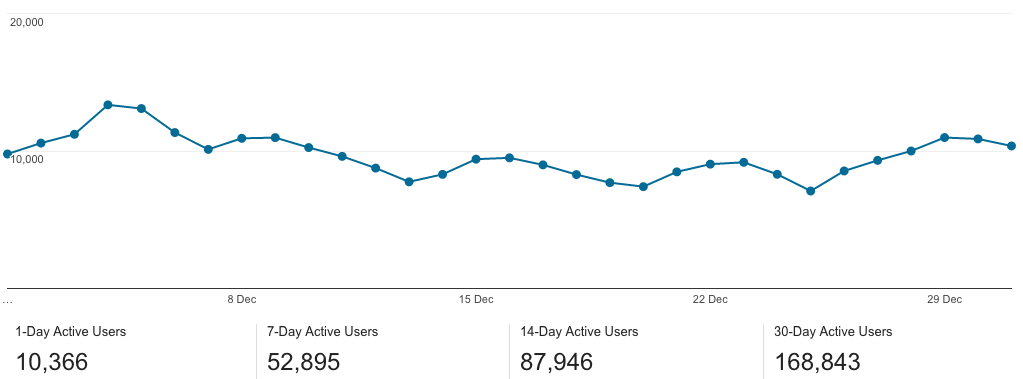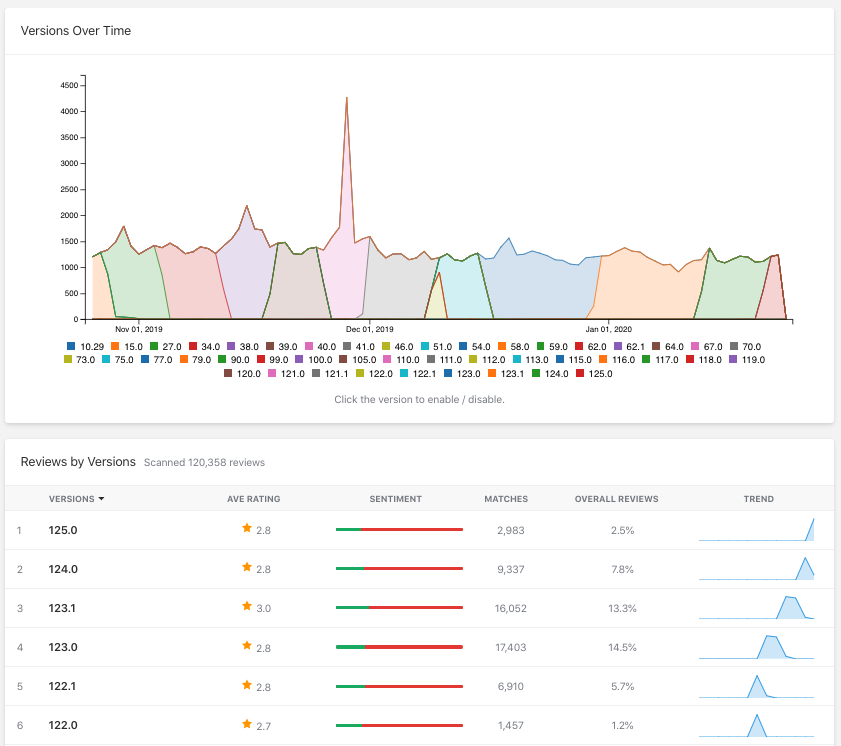Appbot’s offers app review tools for product managers including automated, custom reports on app rating, review sentiment and more.
Appbot can save you hours each month by automating the production of beautifully formatted, interactive PDF reports.Whilst each company has it’s own areas of specific focus there are many reports that are heavily used by the majority of app product teams. We get to talk to a lot of different product managers at Appbot and get great insights into their reporting requirements.
Mobile app reporting requires a number of different app review tools. Bringing together the information from different services is what makes a great report.
Product Managers typically cover the following in their regular reports:
- Downloads
- Revenue
- Reviews, Ratings & Sentiment
- Engagement & retention
- Update / release reporting
- Replies statistics
- Acquisition
- Roadmap
Appbot can help with insights into several, but not all, of these areas. The details you’ll usually find in each section are outlined below…
Downloads
Apps are such a chicken and egg problem. Downloads drive downloads. Downloads mean nothing without retention, engagement, and monetization. Still, downloads are the most important factor in rankings in top charts and search results.
Typical reporting includes:
- Total downloads for the period
- % change on the last period
- % change on the same period for the previous year
- Breakdown by country
There are many great services that provide download figures, like App Annie (see screenshot above).
Revenue
You aren’t a real business without revenue. Your app pricing strategy is always a difficult one with a lot to consider. Revenue can come from many different places including paid downloads, in app purchases, subscriptions, advertising, affiliates, etc.
Typical reporting includes:
- Total revenue per source (IAP, ads etc)
- Average revenue per user.
- Revenue per country.
- Notable countries where spikes or dips occurred.
- Any changes to pricing strategy.

Reviews, Ratings & Sentiment
We are a little biased because it’s what we do at Appbot, but we believe happy users are the key to a successful app. Tracking and reporting on how users feel about the app over time gives a great picture of how your product is improving.
Ratings & reviews are also second only to downloads in influencing the top charts and search rankings.
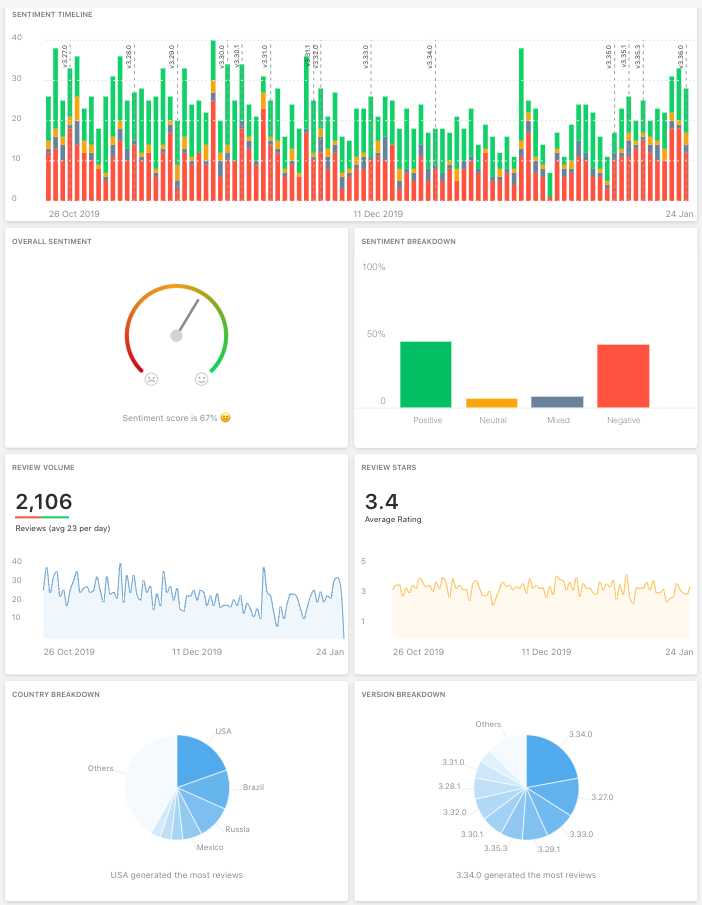
- Changes in sentiment over the reporting period.
- Average rating in the reporting period.
- Review volume trends.
- Country breakdowns / distribution.
- Version breakdowns / distribution.
Of course (shameless plug!) Appbot is the best choice for sentiment and review reporting – you can see an example of the type of Sentiment report we can product for your app in minutes, above.
Engagement & retention
There isn’t a lot of point getting all those downloads if users don’t stick around. Things such as time spent in the app, opens per day, etc can have a huge impact on the success of the product.
Typical reporting includes:
- Active users
- Returning user %
- Session duration
- Screens per session
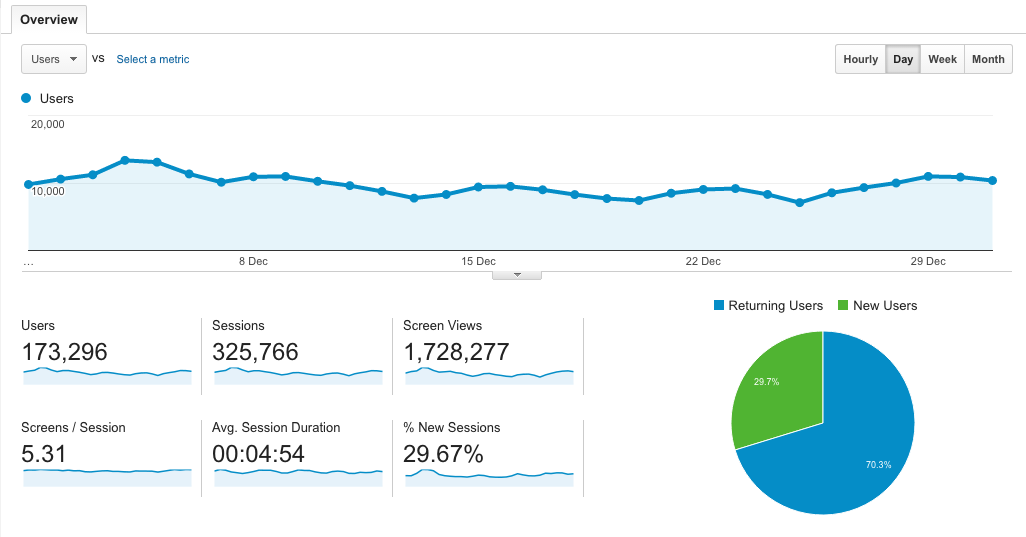
Update / release reporting
Moving fast with releases and updates is key to any mobile app, but measuring the impact of updates on the happiness of the end user is essential to making sure you are moving in the right direction.
Select an app review tool that covers:
- New releases in the time period
- New features contained in the update
- Uptake of the new version
- Sentiment and review count of each version released
- Bugs and issues introduced
You’ll need Appbot for this mobile app reporting amazingness 🙂
Reply statistics
Replying to reviews is essential for happy customers. However, 97% of developers ignore them. Would you ignore support requests in another medium?
Typical reporting includes:
- Reply rates
- Impact of replying (improving rating after replies).
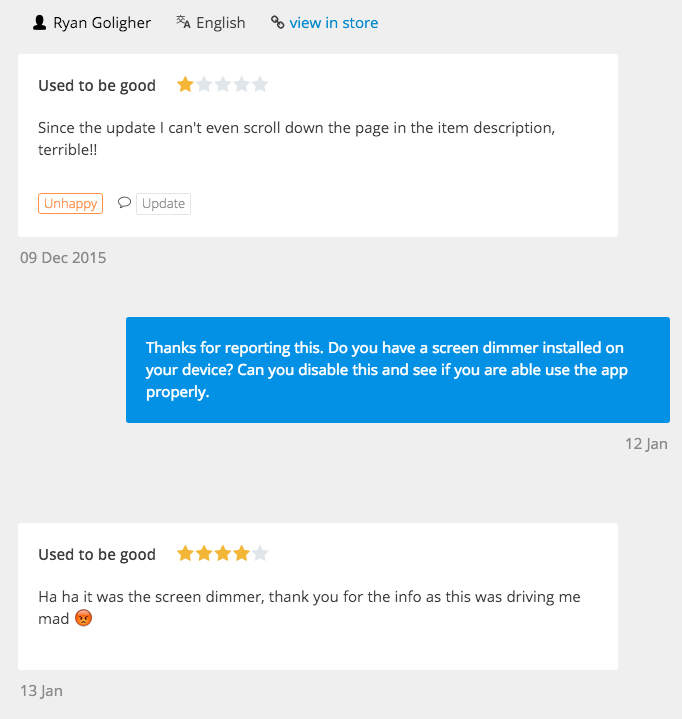
Acquisition
Acquiring new users doesn’t just happen magically.
Typical reporting includes:
- Cost per install (CPI) for advertising.
- Advertising sources / costs.
- Promotions
- SEO
- ASO
- Social engagement
- Gamification results
This information needs to be gathered from different advertising platforms and social media sites.
Roadmap
The majority of product managers say a key component of their job is deciding what to put in the app next. Correctly prioritizing features and fixes is extremely important for happy users and continued growth.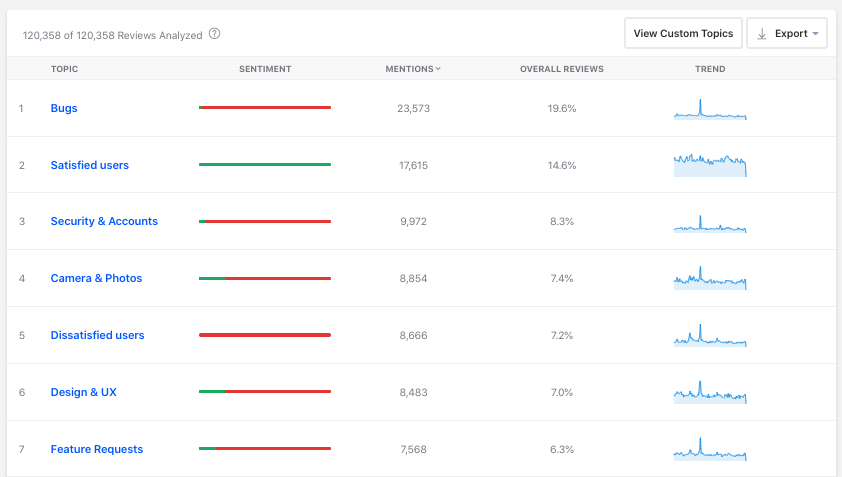
- Common themes and requests
- Features to be implemented
- Bugs to be fixed
- Deadlines
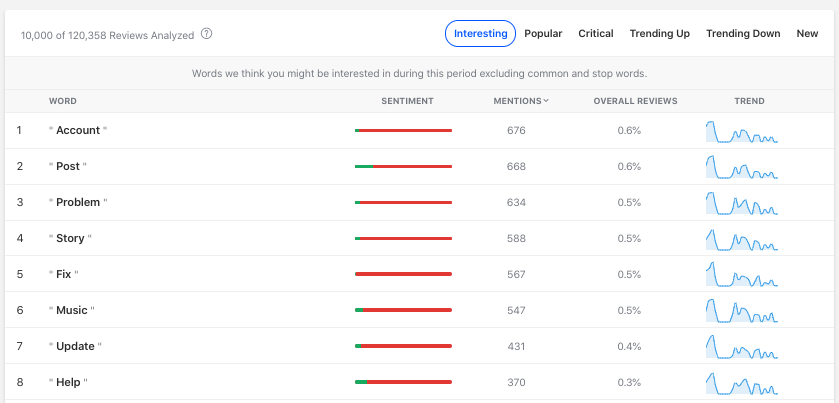
Choosing the right app review tools is key to your success
Selecting the best app review tools is critical for every product manager of a mobile app. Understanding and communicating the progress and trajectory of an app benefits the entire team.
Look for tools that offer customizable reporting and, ideally, some level of automation to ensure you can focus your efforts on analysis and implementation, rather than number crunching.
Feel free to contact us with any questions reports app managers create or check out our FAQ section here.

